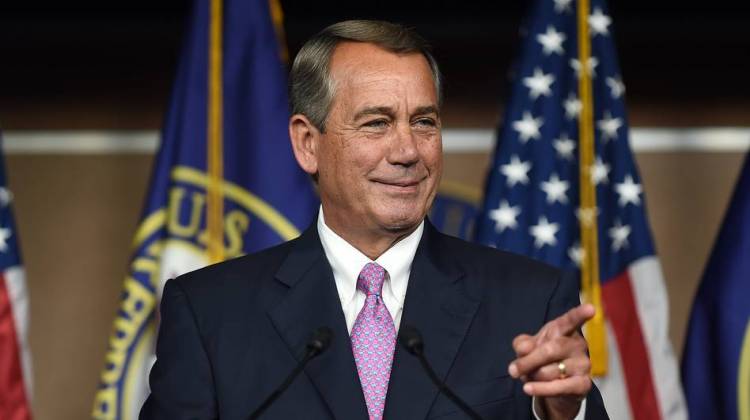Congress just might give the nation a reprieve on the fiscal drama for all of 2016. House and Senate leadership, together with the president, have agreed on a two-year spending deal, and they have also agreed to put off a debt-ceiling fight until March 2017.
If it passes, it would mean no more fears of defaults or shutdowns for a while, but it's ultimately a short-term fix. The new budget is more of a political victory than a fiscal one, leaving many of the nation's underlying budgetary problems in place.
Here are the basics on what's in the deal:
- More spending. The deal calls for an increase in discretionary spending caps of $80 billion over the next two years, to be evenly split between defense and non-defense spending. To put that in perspective, it's a bump of around 3.9 percent over what's in current law for discretionary spending.
- And then a little more spending. $32 billion more will be spent on the Overseas Contingency Operations fund, a stash of money established as an "emergency" fund for military operations.
- Putting off high Medicare premiums. Medicare Part B premiums had been scheduled to go up drastically next year. This deal would stop that from happening.
And a handful of policies offset that spending, including:
- Selling oil. The government would raise money by selling 58 million barrels of oil from the Strategic Petroleum Reserve, a U.S. stockpile of oil.
- Selling spectrum. The deal calls for auctioning off more parts of the wireless spectrum to telecommunications companies.
- Tweaking pensions. Under this deal, businesses could temporarily pay lower amounts into employees' pension plans. That can goose government revenues because it gives businesses higher taxable revenue.
- Crop insurance changes. The government subsidizes farmers' crop insurance and also targets a specific rate of return for those insurance companies. As part of this bill, the government will have to renegotiate its agreements with those companies and lower the targeted rate of return from 14.5 percent to 8.9 percent.
- Keeping Medicare payments to doctors low. Sequestration capped how much Medicare pays to doctors. This deal maintains those levels, which had been scheduled to go up.
And then there are a couple of other important provisions:
- Suspend the debt ceiling. It suspends the debt ceiling until March 2017. At that time, the Treasury will raise it to cover all the borrowing that happened up until then.
- Shift Social Security money around. The Social Security Disability Insurance fund will, as of right now, be unable to pay full benefits late next year, when it would have to slash them by 19 percent. This bill would shift money from the old age fund and into the disability fund — a tactic Congress has used several times before.
- Tougher qualifications for disability. The deal tightens rules on qualifying for disability insurance and raises penalties for Social Security fraud, among other things.
- The Small House Rotunda at the Capitol is now the "Freedom Foyer." You heard it here first.
The obvious good news is another year and a half until the nation should have to worry about default again, not to mention another two years until it's time to fret over a government shutdown.
Then again, put into context, that's some pretty flimsy good news.
"That tells you a great deal about how far budget policy has gone ... where keeping a government funded is considered a great achievement," said Stan Collender, Executive Vice President at Qorvis Communications and a former staffer on the House and Senate Budget committees.
One problem with the deal is that while it staves off crisis, it doesn't solve any real problems, says one expert.
"The two-year budget deal does resolve some short-run uncertainty relative to a situation with periodic CRs [continuing resolutions] and the looming threat of government shutdown or default," said Alan Auerbach, professor of economics and law at the University of California-Berkeley. "On the other hand, it still puts off any serious confrontation of longer-term budget issues, which have to do with the structure of old-age entitlement programs,"
Another potential problem — it pays for itself using a few tools some budget wonks consider questionable. In the words of Marc Goldwein, senior vice president at the Center for a Responsible Federal Budget, "there are a few gimmicks" in how this budget raises revenue.
The Overseas Contingency Operations fund, for example, was established as an emergency fund for wartime spending...but it's unclear what the definition of "emergency" exactly is. Congress has ended up using it to fund defense spending to the tune of $1.7 trillion since 2001, as Politico's Danny Vinik wrote earlier this year.
Pension smoothing is also a way to boost revenue now while putting off lower revenue until later.
In addition, Auerbach points out that while selling oil technically reduces the deficit, it's really an exchange of assets — oil for cash — and at a time when oil prices are very, very low. Moreover, it's not a sustainable budget strategy.
"It is real savings, but it's not something you can repeat," said Goldwein. "Eventually you're going to run out."
Speaking of revenue, this could be one more sticking point in the deal: it doesn't entirely pay for itself. The CBO has estimated that the debt would cut spending and raise revenue by around $76 billion...but also, after increasing spending caps, increase total outlays by nearly $90 billion.
9(MDEwMDc1MzM3MDEzNDczOTA0MDc1MzViMQ001))
 DONATE
DONATE







 View More Articles
View More Articles



 Support WFYI. We can't do it without you.
Support WFYI. We can't do it without you.